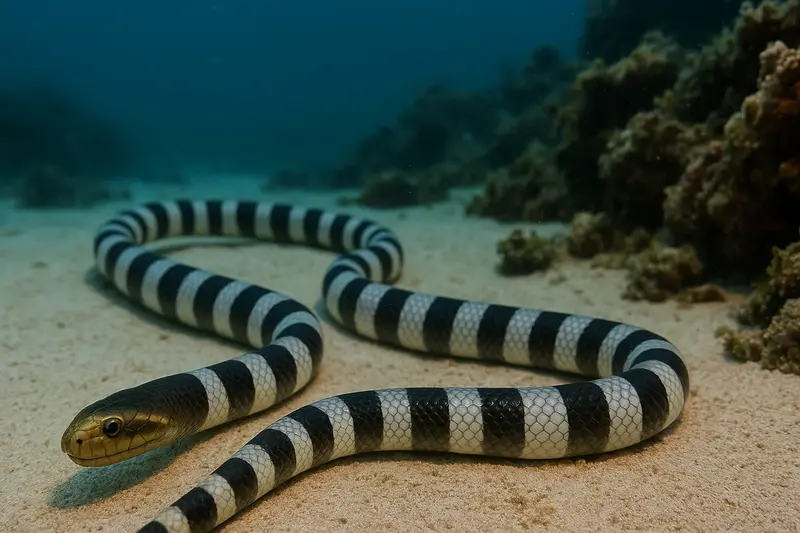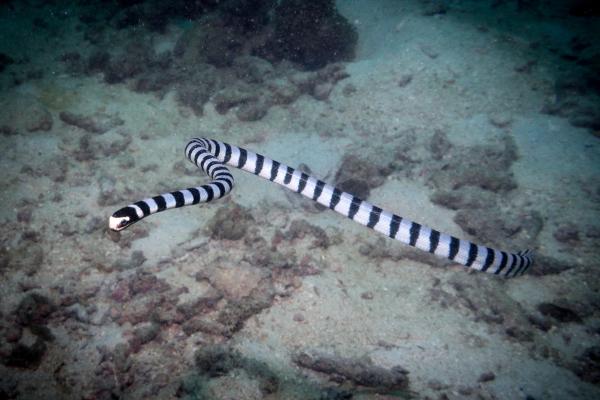Sea snakes are highly venomous reptiles belonging to the subfamily Hydrophiinae of the family Elapidae. They are fully or partially aquatic and inhabit warm coastal waters of the Indian and Pacific Oceans. Adaptations such as paddle-shaped tails, skin respiration, and salt-excreting glands make them specialists in marine life.

Sea snakes are venomous marine reptiles that evolved from terrestrial elapids. Most species are entirely aquatic and incapable of movement on land, except for the genus Laticauda, which retains primitive traits allowing limited terrestrial activity for resting and reproduction.

The subfamily Hydrophiinae includes about 62 species across 17 genera;
Adults usually measure 120–150 cm, though Hydrophis spiralis can reach 3 meters;
They lack gills and breathe through lungs;
Their nostrils have valve-like flaps to block water, and their trachea can extend to the roof of the mouth for surface breathing;
Some species (e.g., Hydrophis platurus) can absorb up to 25% of oxygen through their skin, a rare trait among reptiles;
They possess sublingual salt glands, which excrete salt via tongue movement;
The tail is paddle-shaped, laterally compressed for swimming;
Most species have reduced ventral scales, limiting land mobility. Only Laticauda retains wide belly scales;
Their diet mainly consists of fish, especially eels. Some also feed on mollusks and crustaceans;
Most sea snakes are ovoviviparous, giving birth to live young. Laticauda is oviparous, laying eggs on land.

Sea snakes produce potent venom, which is myotoxic (damaging muscles and organs) and nephrotoxic (affecting kidneys). The most venomous species is the beaked sea snake (Enhydrina schistosa), whose venom can be fatal at doses as low as 0.02 mg/kg—more potent than the deadliest terrestrial snakes.
Despite this, sea snakes are generally not aggressive toward humans. They usually flee and only bite when provoked or mishandled.
Found across the Pacific Ocean, it has a dark gray body with yellow lateral stripes, narrow ventral scales, and a yellow-tipped tail. Threats include ghost nets, bycatch, and pollution.
Found in Indo-Pacific tropical waters, it features striking black bands over a pale yellow or blue background. Unlike most sea snakes, it can move on land and lay eggs there. Venomous but docile.
Inhabits coastal waters of the Indian and western Pacific Oceans. It has a long, laterally compressed body with yellowish or greenish hues and faint patterns. Primarily fish-eating.
Native to northwestern Australia, this species grows to around 60 cm, with a short pointed snout and violet-brown bands. Once believed extinct in some reef zones, recent surveys have confirmed surviving populations near Exmouth and Broome.
Although highly venomous, sea snakes are essential marine predators that help regulate fish populations and maintain oceanic balance. Understanding their biology is vital for both marine conservation and public awareness.
animal tags: sea snake
We created this article in conjunction with AI technology, then made sure it was fact-checked and edited by a Animals Top editor.